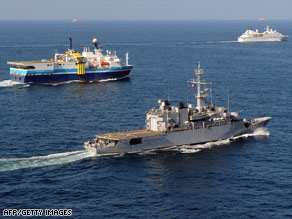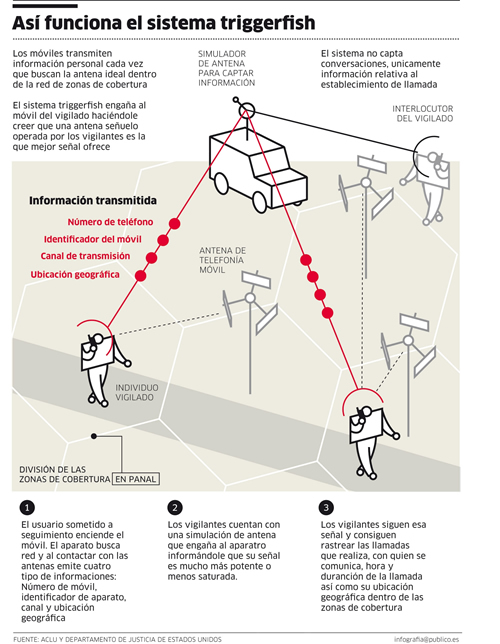SUBMARINO SCORPÈNE: A POSIÇÃO DA MARINHA
Submarinos na estratégia naval brasileira
Desde a década de 1970, levando em conta a vastidão do Atlântico Sul, natural teatro de nossas operações navais, e a magnitude de nossos interesses no mar, a Marinha do Brasil (MB) constatou, desde logo, que, no que tangia a submarinos, a posse de convencionais não era bastante. Para o cumprimento de sua missão constitucional de defender a soberania, integridade territorial e interesses marítimos do País, tornava-se mister dispor, também, de submarinos nucleares em seu inventário de meios. Aqueles, em face de suas peculiaridades, para emprego preponderante em áreas litorâneas, em zonas de patrulha limitadas. Estes, graças à excepcional mobilidade, para a garantia da defesa avançada da fronteira marítima mais distante.
No presente momento, encontram-se em fase de negociações, a fabricação no Brasil de submarinos convencionais, e a do primeiro com propulsão nuclear, o que se constitui na maior prioridade do Programa de Reaparelhamento da Marinha.
Sobre esse assunto foi criada, no dia 26 de setembro, último passado, a Coordenadoria-Geral do Programa de Desenvolvimento de Submarino com Propulsão Nuclear (COGESN), dentro da estrutura organizacional da Diretoria Geral do Material da Marinha. Essa Coordenadoria tem as atribuições de gerenciar o projeto e a construção do estaleiro dedicado aos submarinos e de sua base; de gerenciar o projeto de construção do submarino com propulsão nuclear; e de gerenciar o projeto de detalhamento do submarino convencional a ser adquirido pela MB.
A COGESN foi criada pelo Comando da Marinha como forma de proporcionar uma melhor integração e sinergia entre todas as Organizações da Marinha, com foco no desenvolvimento de um submarino com propulsão nuclear. Essa criação tornou-se necessária, na medida em que, com a nova visão governamental no que tange à área nuclear e, em particular, à Defesa e à Segurança Nacionais, foram criadas condições para que a Marinha pudesse, mediante nova abordagem, levar adiante um empreendimento até aqui mantido no limiar da sobrevivência, à custa de sacrifícios orçamentários da própria Força Naval.
Desde o final da década de 1970, a MB desenvolve, nas dependências de seu Centro Tecnológico da Marinha em São Paulo, um programa de desenvolvimento de tecnologia nuclear, visando, por um lado, o domínio do ciclo do combustível nuclear, que logrou êxito em 1982, com a divulgação do enriquecimento do urânio com tecnologia desenvolvida pela MB. Por outro, o desenvolvimento de um protótipo de reator nuclear capaz de gerar energia para fazer funcionar a planta de propulsão de um submarino nuclear. Este, ainda em desenvolvimento, com operação prevista para 2013.
Paralelamente, para capacitar-se a construir submarinos, a MB, na mesma época, cuidou de adquirir, da Alemanha, a transferência de tecnologia de construção de submarinos, empregando, para tanto, o projeto do submarino IKL-209, à época, o modelo mais vendido no mundo. Foram, assim, construídos quatro submarinos no Arsenal de Marinha do Rio de Janeiro (AMRJ), colocando a MB no limitado rol dos países construtores desses engenhos.
O que falta para alcançar as metas
As principais pendências, no que tange à capacitação do País para construir um submarino nuclear, considerando já alcançada a meta do combustível nuclear, incluem:
a) - o término da construção e a operação experimental do reator nuclear e da respectiva planta de propulsão. Com o compromisso do presente governo de aportar recursos, sua operação está prevista para 2013; e
b) - não obstante ter logrado êxito na construção de submarinos no AMRJ, falta à Marinha a capacidade de desenvolver projetos de submarinos. O caminho seguido pelas potências que produzem submarinos nucleares foi o de, a partir do pleno domínio do projeto de convencionais, evoluir, por etapas, para um submarino nuclear, cujos requisitos, em termos de tecnologia e controle de qualidade, superam em muito aqueles de um convencional. Assim, o caminho natural para o Brasil seria, da mesma forma, o de desenvolver sucessivos protótipos, até que se chegasse a um projeto razoável, para abrigar uma planta nuclear. Como não se dispõe do tempo nem dos recursos necessários para tanto, a solução delineada pela MB, no intuito de – com segurança – saltar etapas, foi a de buscar parcerias estratégicas com países detentores de tais tecnologias e que estivessem dispostos a transferi-la.
Tendo em vista, por um lado, a total exclusão tecnológica imposta pelas principais potências aos países que buscam o domínio das tecnologias nucleares, barrando-lhes o caminho, e, por outro a indispensável transição a ser feita entre os projetos de submarinos convencionais e nucleares, demandando que a associação fosse buscada com quem produz a ambos, restaram poucas opções.
No momento, apenas dois países no mundo desenvolvem e produzem, simultaneamente, ambos os tipos de submarinos, o que limitou o campo de abordagem, respectivamente, à Rússia e à França. (Só foram considerados os fabricantes tradicionais. Pouco se sabe sobre o projeto chinês e os resultados obtidos. Na verdade, também eles vivem uma fase de aprendizado).

A Rússia desenvolveu sua tecnologia nuclear e possui um projeto de submarino convencional, o Amur 1650 (imagem à esquerda), mas apresenta alguns óbices: não possui qualquer cliente no mundo ocidental, nessa área; seu projeto de submarino convencional ainda não encontrou, pelo que se conhece, algum comprador; o apoio logístico enfrenta dificuldades; e, o que a desqualifica definitivamente, não está disposta a transferir tecnologia. Só se interessa por vender submarinos, o que está muito longe das pretensões brasileiras.
A França, por outro lado, também desenvolveu sua própria tecnologia, emprega métodos e processos típicos do Ocidente e de mais fácil absorção por nossos engenheiros e técnicos, além de ser um fornecedor tradicional de material de defesa para o mundo ocidental. No momento, exporta submarinos convencionais Scorpène (ver foto ao lado) para países como o Chile, a Índia e a Malásia. Acima de tudo, está disposta a – contratualmente – transferir tecnologia de projeto de submarinos, inclusive cooperando no projeto do submarino de propulsão nuclear brasileiro, excluídos o projeto e a construção do próprio reator e seus controles, que caberiam exclusivamente à MB. É exatamente o que interessa ao Brasil.
A opção pelo Submarino Classe Scorpène
O processo de escolha do Submarino Classe Scorpène foi longo, exaustivo e criterioso, e envolveu reuniões, visitas a países possuidores de submarinos nucleares e de submarinos dessa Classe, além de análises de diversos relatórios e intensas negociações.
Assim, para se chegar à conclusão sobre o melhor projeto de um submarino convencional que atendesse a Marinha, executou-se uma extensiva pesquisa nos diversos modelos de submarinos disponíveis, junto aos países que os detém, para se conhecer as qualidades e limitações de cada um deles.
Como qualquer projeto dessa complexidade, é natural que existam vantagens e desvantagens em cada uma das opções examinadas, avaliações que foram consideradas nos citados relatórios e que serviram de base para a escolha.

Algumas características do projeto do Submarino Scorpène merecem especial destaque. Diferentemente do usual, apesar de tratar-se de um submarino convencional, seu projeto não constitui evolução de uma classe convencional anterior; pelo contrário, seu casco hidrodinâmico é derivado do submarino nuclear “Rubis/Amethyste”, mas mais compacto. Essa classe de submarinos, denominada classe Rubis (foto à direita), tem seis unidades em operação na Marinha Francesa. Além disso, emprega tecnologias usadas nos submarinos nucleares franceses, como o sistema de combate SUBTICS.
Em decorrência, dentre as vantagens que apresenta, seu projeto destaca-se por facilitar uma rápida transição para o nuclear, haja vista sua forma de casco clássica daquele tipo de submarinos, com hidrodinâmica apropriada para elevados desempenhos em velocidade e manobra

À esquerda, pode-se observar a diferença entre um casco tipicamente de nuclear - como o do Scorpène (figura ao lado, acima) – comparado com o de um convencional clássico, um IKL-209 (figura ao lado, abaixo).
Além das peculiaridades de projeto, o Scorpène tem a vantagem de empregar os mesmos sistemas (sensores, sistema de combate, armamento, sistema de controle da plataforma etc) existentes nos submarinos nucleares franceses. Ajustes de software compatibilizam as diferentes necessidades de desempenho. Do ponto de vista logístico e de atualização tecnológica constitui diferencial respeitável.
Assim, considerando a necessidade brasileira de abreviar processos, - na verdade, queimar etapas, sem jamais comprometer a segurança –, a escolha do projeto do Scorpène, para servir de base ao desenvolvimento do projeto do nosso submarino de propulsão nuclear, resulta de aprofundados estudos e amadurecido processo de tomada de decisão. No entender da Marinha, essa escolha constitui a opção de menor risco para o êxito da empreitada, de resto, um acalentado sonho da Força Naval há, já, trinta anos.
Os submarinos serão construídos no Brasil. Nesse caso, o modelo do submarino Classe Scorpène será adaptado por nossos Engenheiros Navais. O índice de nacionalização será bastante elevado, havendo em cada um mais de 36.000 itens, produzidos por mais de 30 empresas brasileiras.
O acordo com a França, país que possui grande experiência no assunto e tecnologia bastante moderna, visa abreviar as etapas da parte não nuclear do submarino de propulsão nuclear, com a transferência de tecnologias de projeto e construção. Existe também um grande interesse da Marinha em conseguir que empresas francesas transfiram a indústrias nacionais a capacidade de fabricação de importantes equipamentos, que possuem requisitos de desempenho bastante rigorosos, exigidos para a operação em condições extremamente severas, como é o caso de submarinos.
Esse convênio está em fase final de discussão, mas, ressalta-se que, nos moldes pretendidos pela Marinha, ele prevê a transferência de tecnologia para a construção de submarinos convencionais e para a parte não nuclear do submarino com propulsão nuclear. Como exemplos, podemos mencionar a estrutura do casco resistente, as condições de desempenho hidrodinâmico, os periscópios, sistemas de combate e de comunicações, o teste dos hélices em laboratórios especializados, entre outras áreas.
Considerando a garantia dada pelo Governo Francês da transferência da tecnologia e as experiências positivas observadas sobre o Submarino da Classe Scorpène, a Marinha não teve dúvida em optar por essa obtenção.




















